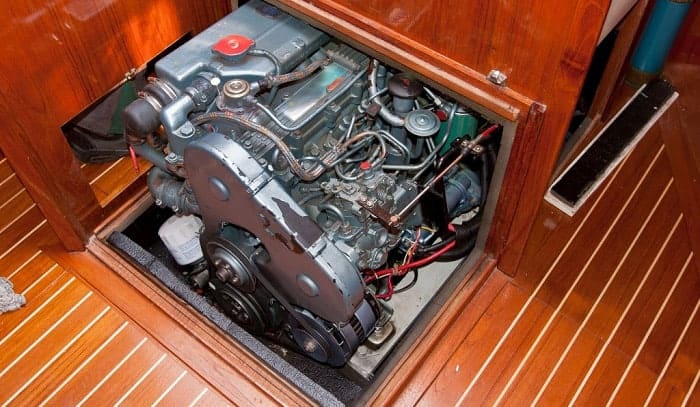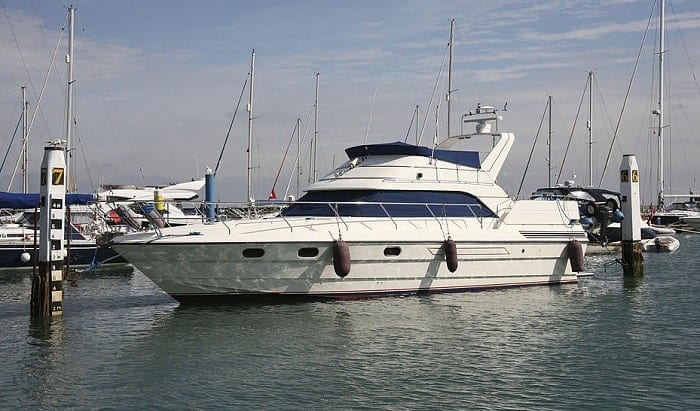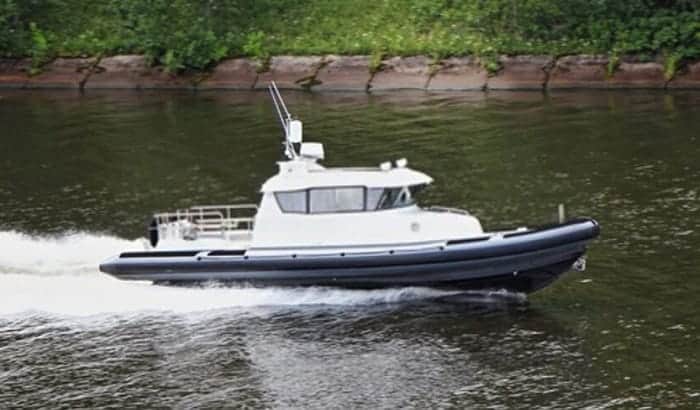Easy Step-by-step Guide to Start Your Inboard Boat Engine Out of Water
- Prepare your boat and tools
- Attach the water hose to the flusher
- Place the flusher
- Inspect placements and attachments
- Turn on the water then the engine
- Allow the engine to run for several minutes
Boating is an activity where safety is given priority. Preparing good equipment and supplies is important, but it’s also important to keep equipment working in good condition.
Your boat engine is something that can be complicated to maintain. If there’s a problem, you can call a professional, but regular maintenance should also be performed on your boat engine, and this is something that you can do yourself.
However, performing maintenance the wrong way can damage your engine. Here we will cover how to start an inboard boat engine out of water so you can do maintenance on your boat yourself.
Table of Contents
What is an Inboard Boat Engine?
There are three types of Boat Engines. They are the Inboard, Outboard, and I/O engines. The I/O engine is a hybrid combining characteristics of both outboard and inboard engines. The outboard engine is an engine that is mounted externally or outside the hull of the boat.
Here we are covering the Inboard Engine, which is installed inside the hull. There are two types of these depending on where the engine is placed, the center-mount and the rear-mount. For this guide, however, we make no distinction between the two types of inboard engines.
Just remember that the three engine types need different tools and methods of maintenance.
What Do You Need?
- Your boat
- Water hose
- Water source where you connect your hose
- Inboard motor flusher
What is an Inboard Motor Flusher?
An inboard motor flusher is an item that we use to supply water to the engine for out-of-water situations. Inboard and outboard engines use different kinds of flushers. For inboard engines, you need a muff flusher that looks like a toilet plunger, also called a muff plunger.
It has a cup similar to a toilet plunger, but it also has a nozzle where you can attach your water hose. This cup is connected to an adjustable shaft which functions as the motor flusher’s leg. This muff flusher is also used to winterize boats with inboard engines, but that’s a discussion for another time.
The motor flusher is also known as a fake-a-lake because it is used to simulate the presence of a body of water as a water source. It works by filling the cup with water, which is where the water intake hole gets water for the engine.
How to Start an Inboard Engine Out of Water?
Prepare everything you need.
You have to make sure that your water hose is connected to a water source that has enough pressure. Also, check to see if water is flowing through the hose properly, and make sure that the hose itself is clear and that nothing can obstruct the flow of water.
This guide only covers inboard boat engines that are loaded onto a boat. We will need the boat to be raised for this activity, and having it on a trailer should be just fine.
Connect the water hose and the motor flusher
Attach your water hose to the motor flusher and make sure that it is firmly and securely attached. You do not want the attachment to come loose once you turn on the water, and especially once the engine is turned on. Make sure that the water flows properly into the motor flusher’s cup.
Find your boat’s water intake and place the motor flusher over it
Get underneath your boat and find the water intake. The intake’s location can be different depending on your engine and boat, so refer to your manual for this information.
Once you find the intake, place the cup of your motor flusher over it. Next, adjust the motor flusher’s leg to a length that reaches the ground. You then wedge the motor flusher between the bottom of your boat and the ground, this is how you secure the motor flusher in place.
Make sure everything is secure and that the motor flusher has water flow
Double-check and make sure that the motor flusher is firmly in place. You do not want it coming loose when the engine is turned on. It won’t hurt to triple-check that everything is secure at this point. Next, check to see that the water is flowing out of the motor flusher. Turn it back off after checking.
Turn the engine on when there’s a water flow
Prepare your engine. Remember, you must not turn it on yet. Just get it ready first. Once the water is flowing, only then should you turn the engine on. Also, keep your engine on neutral.
Turn the water on, and once you’ve confirmed the flow of water, turn the engine on. Remember to keep checking to see if the water is still running and that it is still being fed into the water intake. It would be better if you could get someone to help you and keep a pair of eyes on it to watch over the water supply.
Check the exhaust, the temperature and rpm of the engine
With the engine turned on and with water being supplied to the engine, check to see that water is flowing out of the exhaust. This is where salt and grime are washed out of your engine.
Remember to keep your engine below 1500 rpm. You won’t have enough water for the engine if you go above that, so it’s also a good idea to keep the engine from revving.
Keep an eye on the temperature for any abnormalities as well. If the temperature reaches 200 degrees Fahrenheit, you should turn the engine off right away. It’s a good idea to let your engine run for over ten minutes or until you reach a certain temperature, around 150 to 160 should do.
Conclusion
Now you know how to start an inboard boat engine out of water. This is not only important for performing maintenance on your boat; it is also for checking to see if your engine is working properly before setting out to sail.
What do you think about this guide? Please leave your comments below and tell us what you think. Also, please do share this article if you found it at all helpful.
Remember to always keep safe, and sail on.

“I am James Harvey – founder of Boating Basics Online. It is established with the drive to help out first-time boaters, which are those desiring to explore their way through the water. So if you are new to boating, start from here with me. “



